An image is worth a thousand words. Sometimes, a picture can encapsulate a thousand tears, a shattered heart, a broken soul, or the silent cries of those who cannot voice their pain.
Top 12 Most Heartbreaking Photos Ever Taken
Cameras have allowed us to capture some of the most wonderful and heartwarming moments, but they have also documented some of the most brutal ones.
Syrian Girl
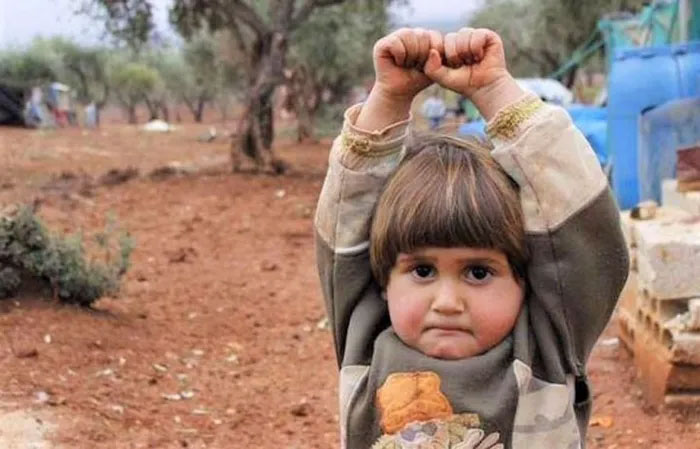
Typically, children fleeing from danger either hide their faces or smile when they see a camera. No child should be exposed to guns, and even fewer should understand the consequences of gun violence.
This is why the photo of a Syrian girl raising her hands in fear, mistaking the camera for a gun, shocked society when it was published. Photographer Osman Sağırlı captured this image at the Atmeh refugee camp in Syria. Sadly, four-year-old Hudea is not the only Syrian child familiar with the devastation of gunfire and the brutality of war.
The Face of Hunger
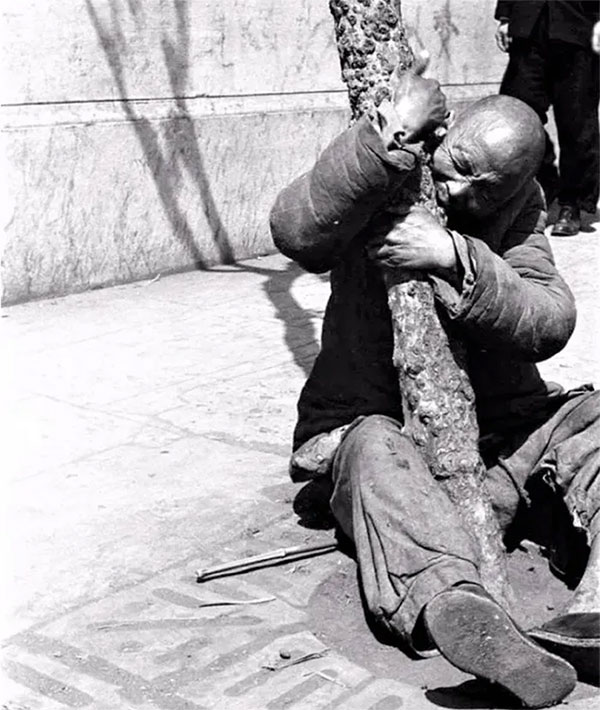
The famine in Henan, China, lasted from the summer of 1942 to the spring of 1943, claiming the lives of 2-5 million people and forcing 4 million to seek food elsewhere. This was a compounded consequence of war, drought, and rampant disease in the region.
Journalist Theodore White reported that many were committing suicide and parents were selling their children for less than $10. A photograph captured a desperate starving man gnawing on tree bark outside the British embassy.
Courage and Grace
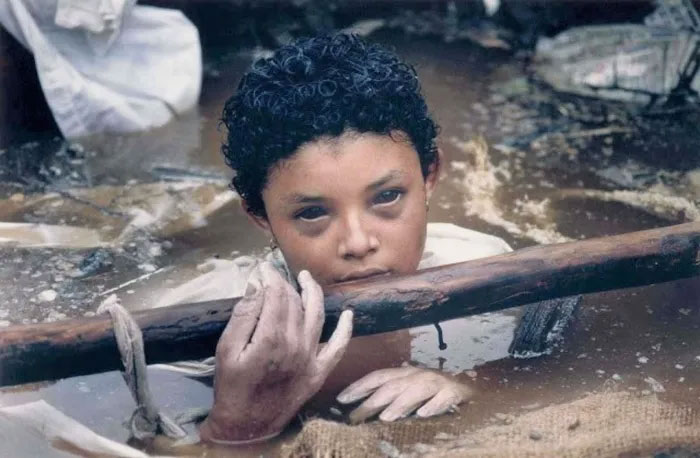
On November 13, 1985, the Nevado del Ruiz volcano in Colombia erupted, obliterating the town of Armero and killing over 20,000 of its 29,000 inhabitants. One of the victims of this tragedy was 13-year-old Omayra Sanchez, whose legs were trapped under a brick wall when volcanic mud flooded her home. Unable to perform a safe amputation to free her, doctors and rescue workers believed the most humane act was to keep her calm as she slowly died.
Hours before she passed away, after being trapped for 60 hours, photographer Frank Fournier arrived and took the now-famous photo of Omayra. The image was honored as World Press Photo of the Year and serves as a haunting reminder of the deadly volcanic eruption in the 20th century.
A Helpless Father
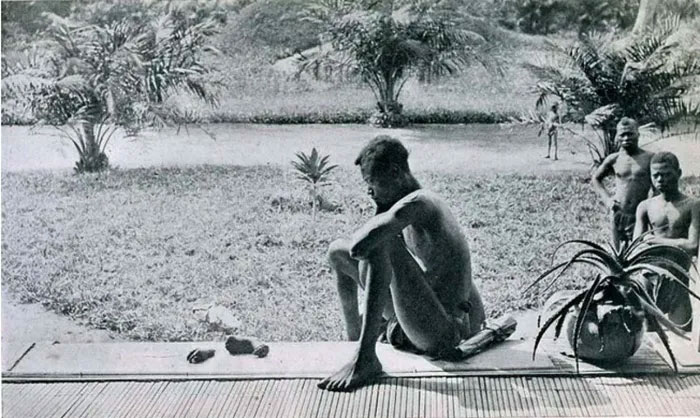
At first glance, the photo appears to show a man sitting on a porch, gazing at something. But that “something” is all that remains of humanity: a foot and a hand. In fact, they belong to the man’s five-year-old daughter, Boali.
She was killed by the overseers of the British-Belgian Indian Rubber Company. The man failed to meet his daily rubber quota; his wife was also killed. Regardless of the era or society, such actions represent the most naked form of savagery.
Gratitude
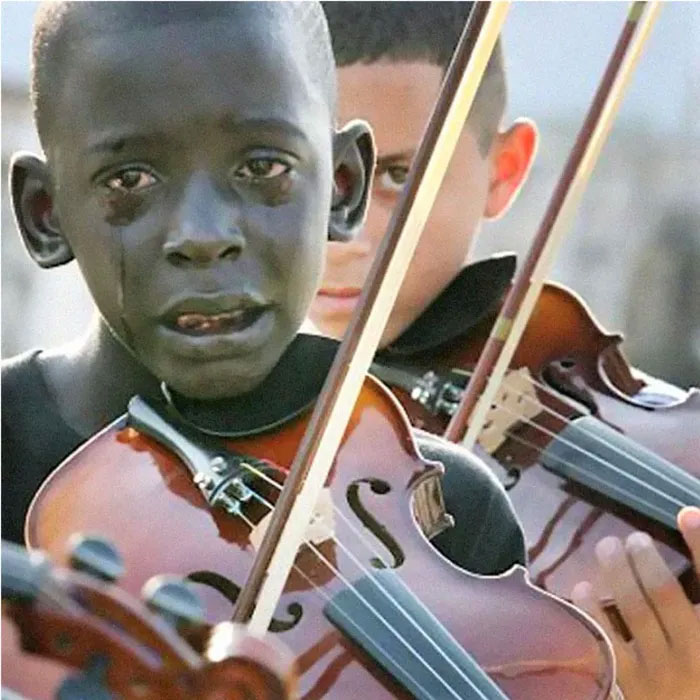
This photograph captures 12-year-old Brazilian boy Diego Frazão Torquato playing the violin at the funeral of his teacher. Teacher Evandro Silva was the one who helped Diego escape poverty and violence. He was killed in a mafia robbery in October 2009. Tragically, Diego, who had been battling leukemia since he was four, passed away the following year due to complications after an appendectomy.
The Cruelty of Humanity
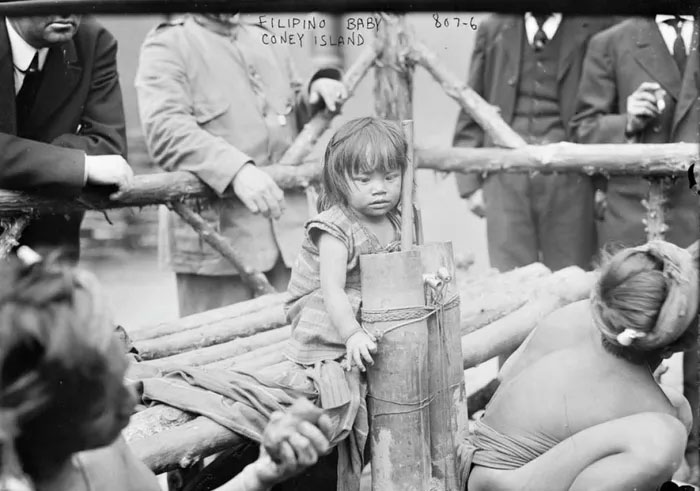
When human cruelty, ignorance, and greed know no bounds, this is the result. The photo here is from one of the “strange attractions” of the zoo—a Filipino girl tied to a log. From the late 19th to early 20th centuries, such “exhibitions” were seen in Paris, Hamburg, Barcelona, London, Milan, and New York. This image was captured over a century ago.
Homelessness
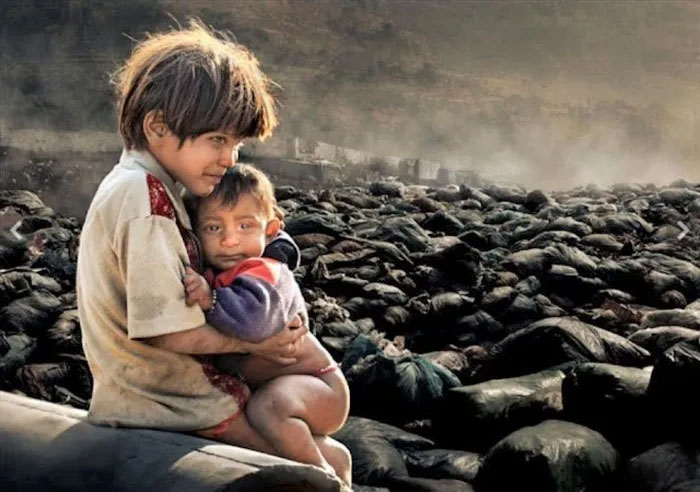
The suffering of children evokes the deepest pain and protective instincts within us. The photograph “Homelessness” by CIWEM Environment Photographer of the Year 2011, Chan Kwok Hung, is a perfect example of this. In Kathmandu, the capital of Nepal, he captured an image of two homeless children living on the streets. Every day, the siblings go to a nearby junkyard to search for anything of value to sell.
A Brother’s Love
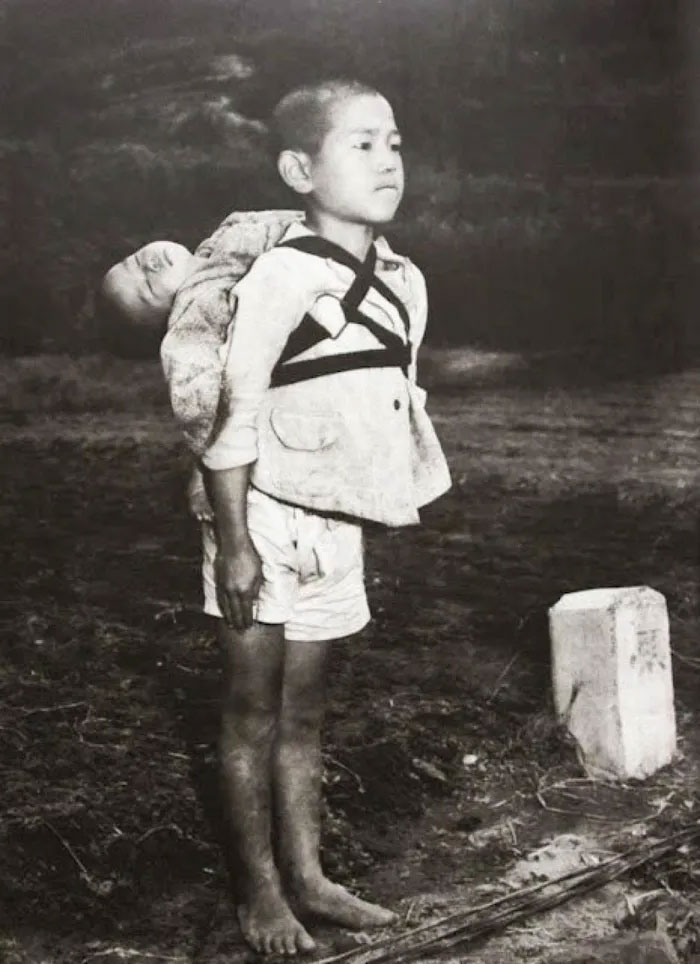
What a Japanese boy displayed when carrying his deceased younger brother for cremation was not only love but also the courage and dignity of a man many times his age. Photographer Joe O’Donnell was present at the site where victims of the Nagasaki bombing were cremated, capturing this image and recounting what happened after they placed the deceased child on the pyre: “The boy stood there motionless, watching the flames. He bit his lower lip so hard that it bled. The fire burned lower like the setting sun. The boy turned away and walked quietly.”
To Die Alone
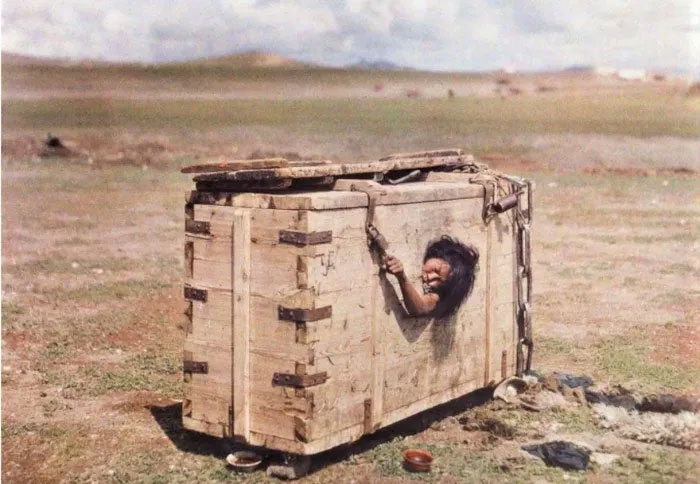
This photograph taken in July 1913 by French photographer Albert Kahn shows a young woman from Mongolia trying to free herself from a wooden cage. Accused of adultery, she was imprisoned until she starved to death. The bowls in front of her were initially filled with water, and she had to beg for food. However, the ultimate outcome was death, regardless of how long the process might take. This inhumane method of punishment was practiced in Mongolia until the early 20th century.
Bloody Saturday
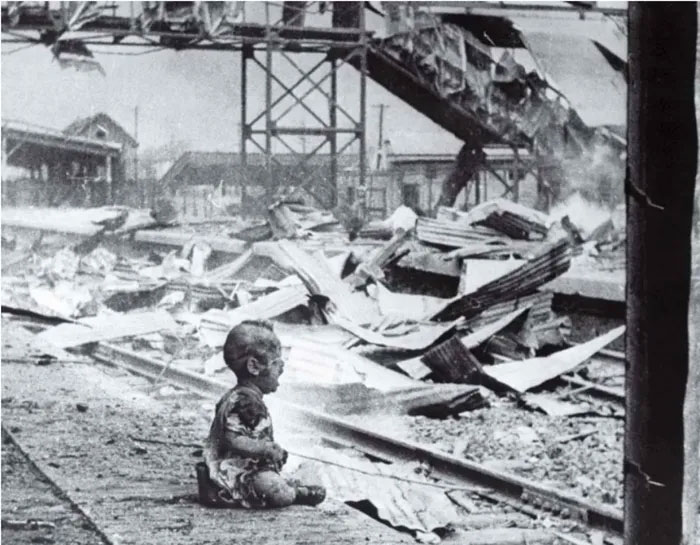
On August 28, 1937, photographer H. S. Wong captured an image of a crying baby just after the Japanese Air Force bombed the Shanghai railway station. This was an attack on civilians, resulting in 1,500 deaths. Shortly after the bombing, a man was seen walking through the rubble, rescuing victims. The child in the photograph was the first he saved.
The Reality of Our Time
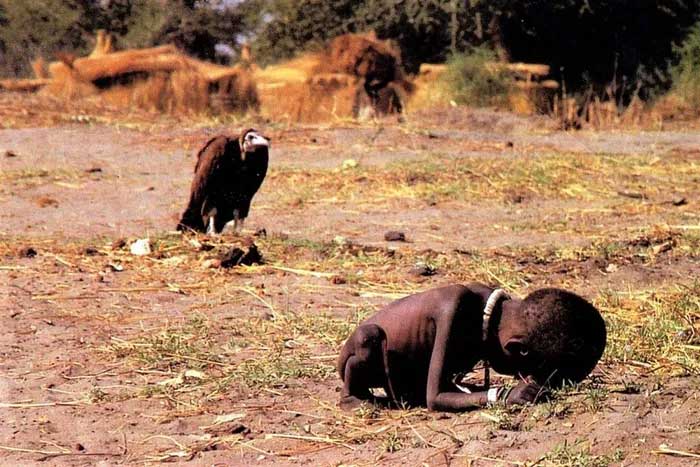
In March 1993, while on a United Nations assignment in Africa, photographer Kevin Carter took a photo that earned him the Pulitzer Prize. While photographing starving victims, Carter encountered a toddler who had collapsed on the ground from hunger. Hiding behind was a vulture waiting to prey on the child.
Carter photographed the scene and chased away the vulture. After taking several pictures, Kevin sat under a tree and cried. Four months later, photographer Kevin committed suicide. Part of his suicide note read: “I am haunted by vivid memories of slaughter and corpses and the anger and pain… of starving or injured children…”.
“The Most Heartbreaking Photo”
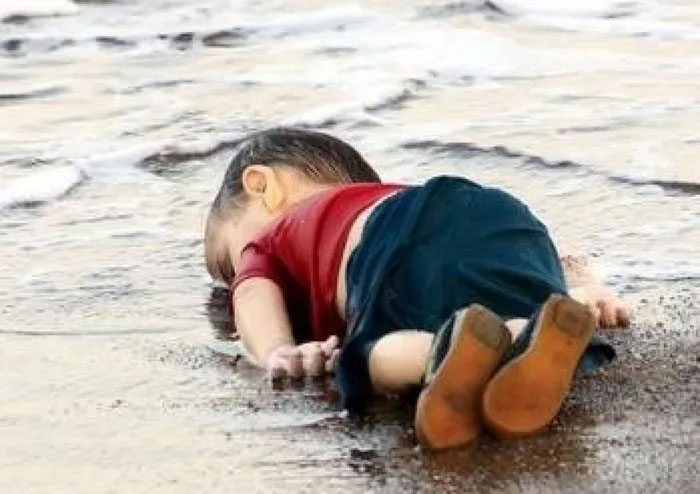
Most people are familiar with the image of 3-year-old Alan Kurdi, a Syrian boy, who washed up on a beach in Bodrum, Turkey on September 2, 2015. He drowned while fleeing the war in Syria with his Kurdish family. On their journey across the Aegean Sea to Greece, their overcrowded boat capsized. Twelve people, including several children, drowned. The photo was widely shared in the media and is regarded as the “Most Heartbreaking Photo,” once again reminding the world of the horrors and desperation of war.


















































